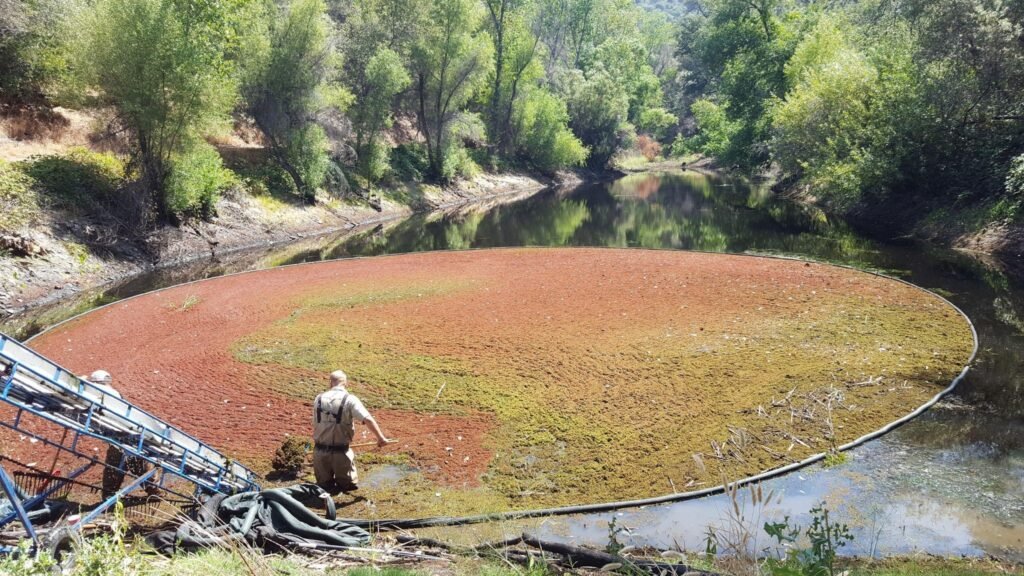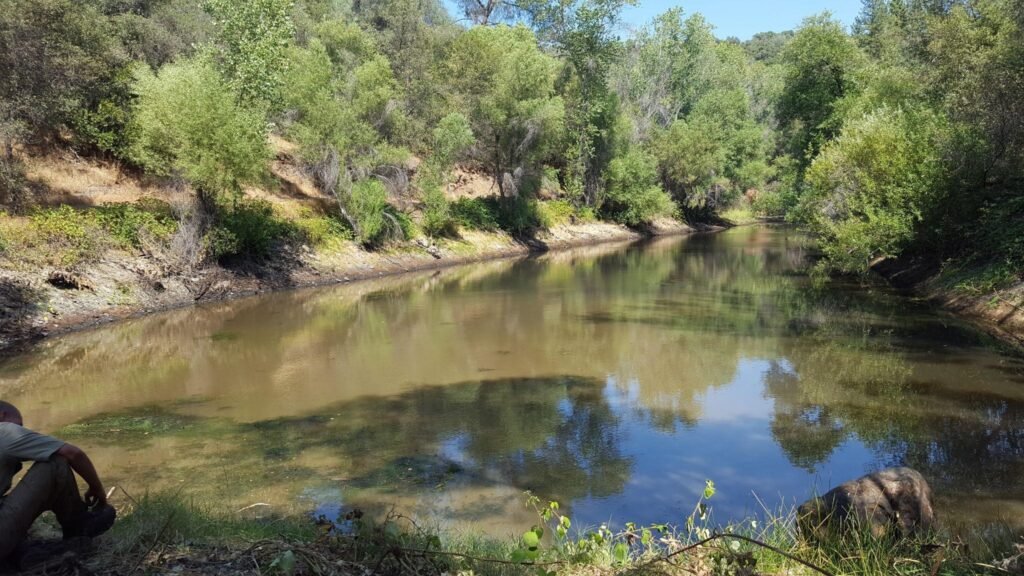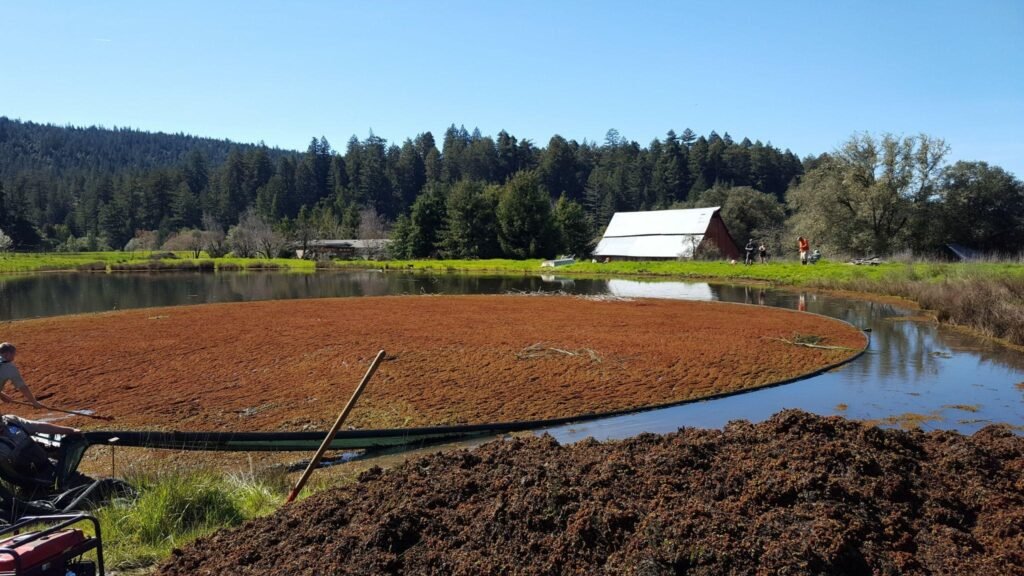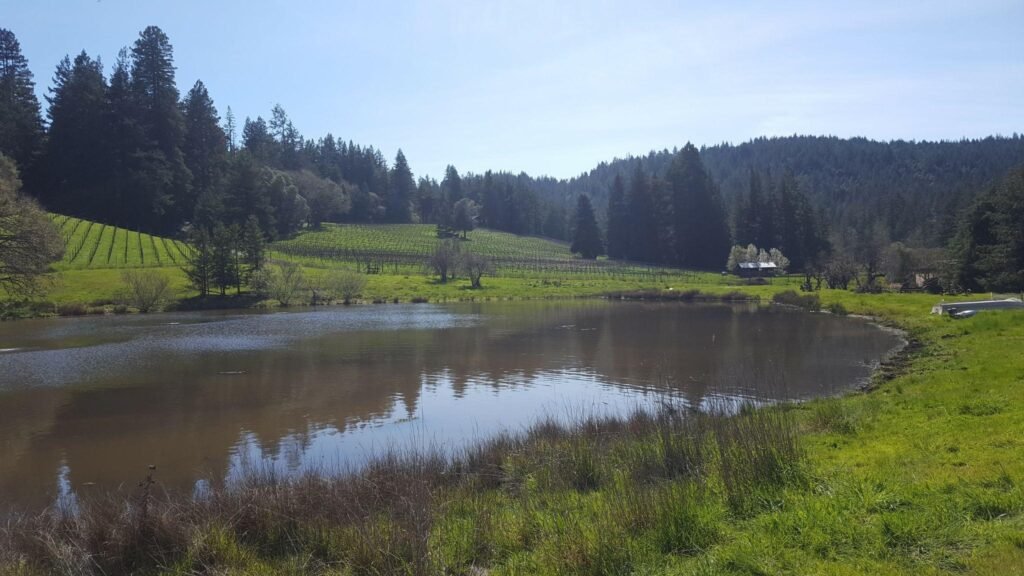

Azolla Harvesting vs. Herbicide Application: A Comparative Analysis When it comes to aquatic weed management, azolla harvesting emerges as a superior alternative to traditional herbicide application. This natural and sustainable method offers a multitude of benefits, ensuring a healthier and more balanced aquatic ecosystem.
Immediate Results and No Dead Organic Matter Accumulation: Unlike herbicides, which may take time to show effects and can leave behind a residue of dead organic matter, azolla harvesting provides immediate results. By physically removing the azolla from the water, it prevents the accumulation of decaying matter that can lead to oxygen depletion and other water quality issues.
Azolla harvesting maintains healthy oxygen levels in the water by preventing the decomposition of excess organic matter. Additionally, as azolla dies and decomposes, it releases these nutrients back into the water, creating a nutrient-rich environment that supports thriving aquatic weeds and algae growth.
At Fuentes Lake & Pond, we are proud to utilize our own innovative azolla harvesting system, which includes the Anaconda booms, and conveyors. These state-of-the-art tools enable efficient and effective azolla removal, ensuring optimal water quality and ecological balance. We also sell this equipment to other companies and pond owners, promoting sustainable aquatic weed management practices.




The Azolla Event, a remarkable geological phenomenon, occurred approximately 50 million years ago during the Eocene Epoch. This event witnessed an extraordinary global proliferation of a tiny aquatic fern known as Azolla—a genus of free-floating plants that forms dense mats on the water’s surface.
According to a scientific theory, the Azolla Event was triggered by a sudden increase in atmospheric carbon dioxide levels, leading to a warmer and more humid climate. These conditions facilitated the rapid growth and spread of Azolla across vast stretches of the Earth’s oceans.
The extensive Azolla mats had a profound impact on the global carbon cycle. As Azolla plants died and sank to the ocean floor, they became buried and converted into coal. This process effectively sequestered vast amounts of atmospheric carbon, contributing to a significant decline
in carbon dioxide levels.
The Azolla Event played a pivotal role in shaping the Earth’s climate and ecosystems. It is believed to have influenced global temperatures, ocean circulation patterns, and the distribution of marine and terrestrial organisms.
While the exact mechanisms and consequences of the Azolla Event are still being studied, it remains a fascinating and pivotal chapter in Earth’s history. Scientists continue to explore its implications for understanding past climate change and the potential impact of future environmental shifts.

At Fuentes Lake & Pond Inc., we’re passionate about preserving the natural beauty of aquatic environments. With more than 20 years of experience
Copyright © 2004-2025 Fuentes Lake & Pond Inc